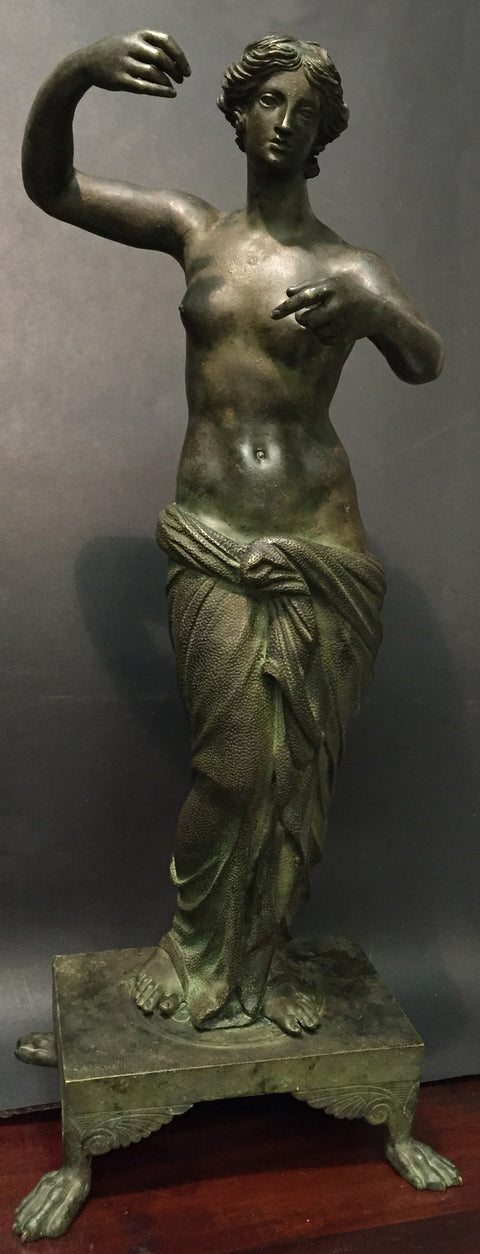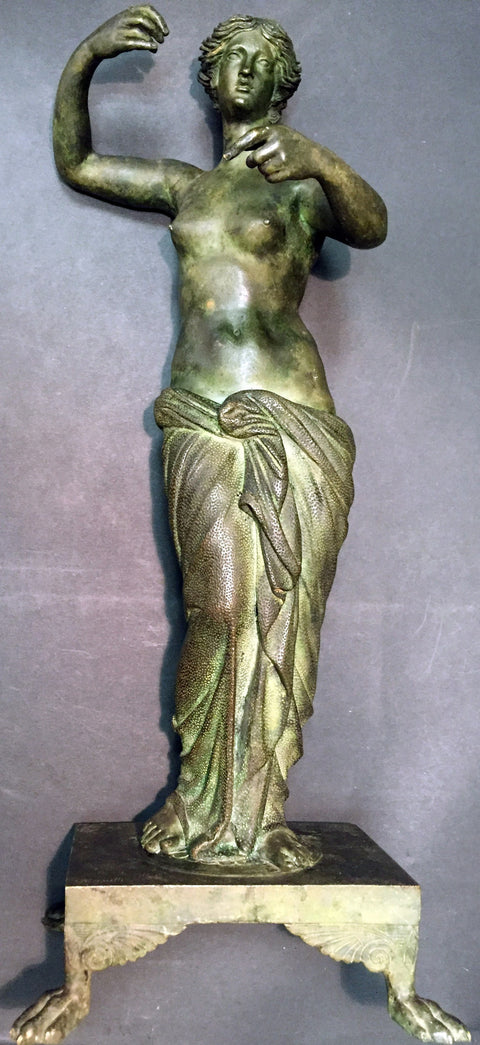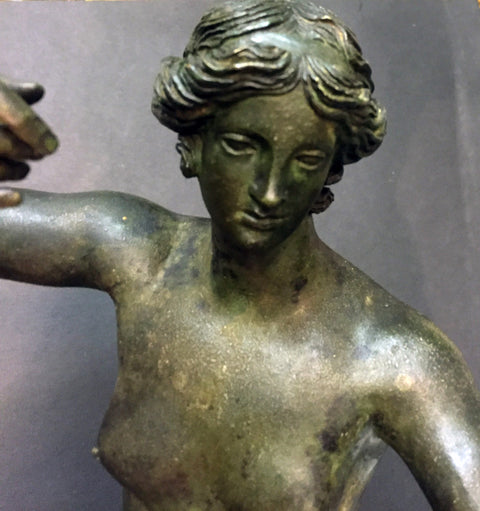A very fine patinated statue after its prototype the Antique statue of “Venus or Aphrodite of Capua” by master sculptor Pietro Masulli who worked in Naples, during the Grand Tour 19th century Period.
The goddess Venus or Aphrodite is represented semi-naked. Raised arms indicate that they probably held a shield, perhaps of Mars, used by the goddess to mirror herself.
Bronze – Lost-wax casting technique 49.5 cm high
Venus or Aphrodite of Capua is a statuary type representing a semi-naked Aphrodite.
Its prototype, named after its findspot at the ruins of an ancient theater in Capua, Italy, is now in the Museo Archeologico Nazionale Napoli (Naples National Archaeological Museum). An earlier version of the type of the Venus de Milo, and close to the Venus of Arles, the statue probably represented the goddess admiring her reflection inside the reflective inner surface of Ares’ shield, a motif known on coins from Corinth.
C.M. Havelock, The Aphrodite of Knidos and Her Successors: A Historical Review of the Female Nude in Greek Art, University of Michigan Press, 2008.

Afrodite di Capua
Afrodite, stante sulla gamba destra, con il piede sinistro poggiato sull’elmo di Ares, è rappresentata seminuda, con unhimation riccamente panneggiato che copre la parte inferiore del corpo sostenuto dal ginocchio della gamba sinistra leggermente flessa. La testa, con i capelli divisi sulla fronte e rialzati alla nuca, ornata da un diadema sul cui bordo doveva esservi un filo di perle, con gli occhi allungati, il volto ovale e le labbra ben disegnate, e la parte superiore del corpo, sono volte verso sinistra, mentre le braccia sono sollevate a reggere, probabilmente, lo scudo di Ares, usato a mò di specchio. Restaurata nel 1820 da Augusto Brunelli nelle braccia, in parte del panneggio e nel naso, insieme ad altre statue in marmo (ad es. l’Adone e la cd. Psyche) decorava la summa cavea dell’Anfiteatro Campano di Capua. Deriva da un originale bronzeo della fine del IV sec. a.C., ripreso in età adrianea, a giudicare dalla resa morbida del volto e dal contrasto tra la levigatezza delle parti nude ed il chiaroscuro del panneggio. In età romana questo tipo venne in altri casi modificato a figura di Nike in atto di scrivere sullo scudo le lodi del vincitore, con l’aggiunta delle ali e di uno stilo nella mano destra.
http://www.cambiaste.com/fr/febbraio-2012-n-03/la-fonderia-chiurazzi-a-napoli-una-grande-storia-italiana-.asp
http://www.antiqua.mi.it/A_bronz_lug12.htm
http://www.antiqua.mi.it/SilenoChiurazzi_Mar16.html




